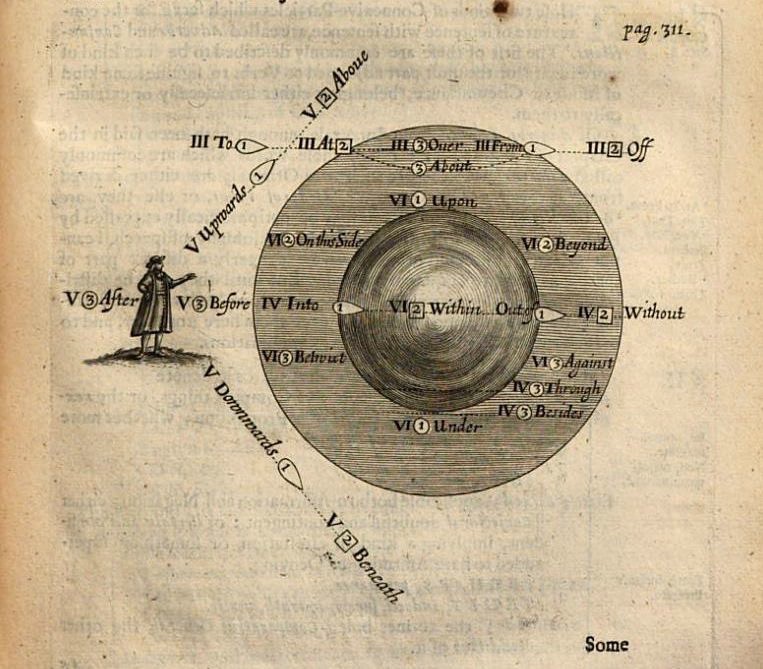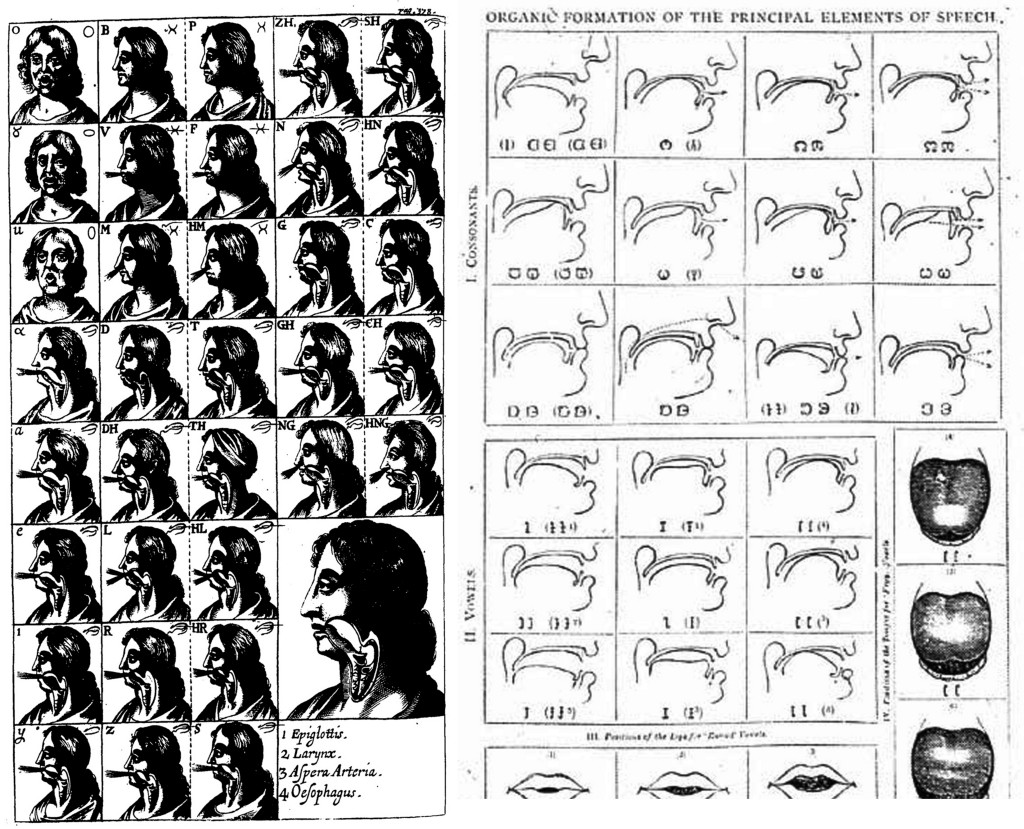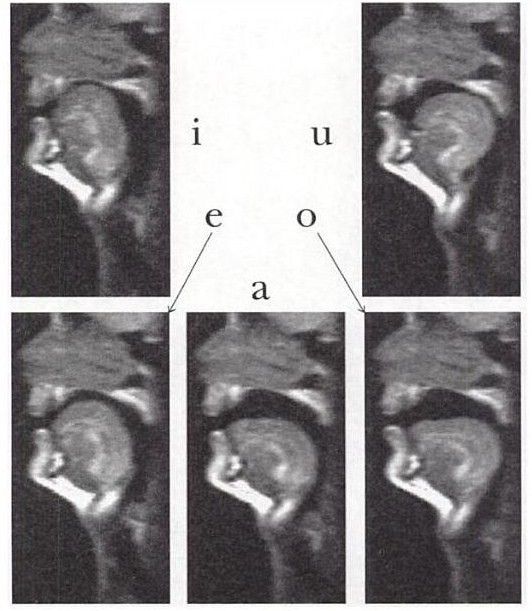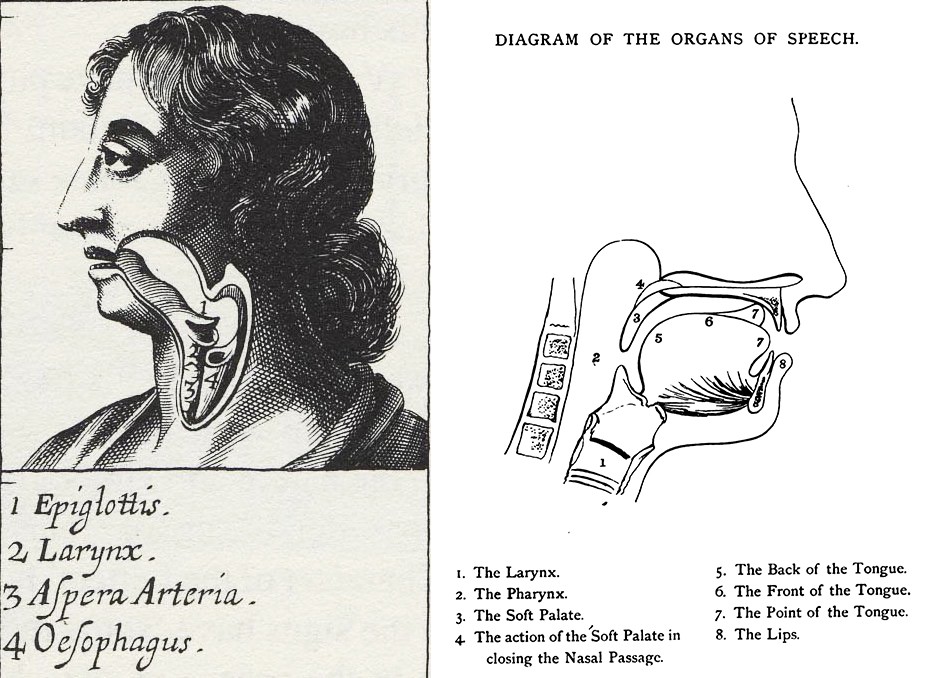The Realest Language
by Josephine Livingstone

There are a lot of different kinds of books about language. Dictionaries record and define a word’s meanings; thesauri lay out its synonyms; and books on modern usage tell you how to string the word together with others to form sentences. There’s something culturally remarkable about language reference books: From etymology to slang to avoidable errors, we like to consult alphabetized guides to the language we already speak. But these books have a history, and they started out as strange things.
Philosophers working on language in the seventeenth century were terrifically ambitious and worked on an amazing array of projects, like attempting to construct new and universal languages that would allow people from diverse linguistic backgrounds to communicate with each other. German polymathic intellectual colossus Gottfried Wilhelm Leibniz tried to create a lingua generalis that allowed the user to generate true propositions. In this philosophical language, Leibniz reduced all human knowledge into simple chunks, then matched each basic idea with a prime number. Mathematical calculations could thus work out difficult conceptual problems via multiplication and division and so on. His idea was to take the ambiguity out of language once and for all. As a result, Leibniz inadvertently developed binary calculus. Less well known, however, is an English clergyman and intellectual named John Wilkins, whose language reference book was just as weird as Leibniz’s, but a lot more pointless and delightful.

In 1668, Wilkins published a book called An Essay Towards a Real Character and a Philosophical Language. Containing sections like “Concerning Natural Grammar” and long sequences of words listed in alphabetical order, you’d be forgiven for mistaking his book for an early kind of dictionary. In his project, Wilkins wondered: “If to every thing and notion there were assigned a distinct Mark, together with some provision to express Grammatical derivations and Inflexions; this might suffice as to one great end of a Real Character, namely, the expression of our Conceptions by Marks which should signifie things, and not words.”
In other words, Wilkins proposed to designate a unique symbol for each “thing” to replace the usual intermediary, a word. By “Mark,” he means symbol. By “Real Character,” he means a system of symbols. This is essentially a logographic writing system. Logographic writing systems — Sumerian Cuneiform, ancient Egyptian hieroglyphs and, all the Han character languages — use logographs, which are graphemes representing a word or morpheme — the smallest possible unit of language — according to its meaning, rather than its sound.
In Wilkins’ system, a basic symbol denotes the species of a thing; the symbols are arranged so as to bring out the affinities between the things they represent. All animal genera, for example, are represented by a horizontal line with a hook attached to it in different positions. Marks to indicate difference are added to the left of the character, and marks for the species to the right.
The problem with this plan is that before Wilkins could come up with a system of “Marks” to represent anything, he would have to come up with some system classifying all concepts, ideas, and beings. He gave it a valiant go; Wilkins wrote enormous taxonomic schemes called the “Philosophical Tables,” in which he attempted to arrange every single thing into a hierarchy, from most general to most particular.
Wilkins also planned for that writing system to be vocalized. His Universal Character matches up the Philosophical Tables to a system of logographic representation — matching symbols to things — while the Philosophical Language matches spoken-out-loud syllables to the Universal Character. Syllables are thus matched to symbols, which refer to things. In this division, Wilkins recognizes the difference between semantic and phonetic aspects of written language. This might seem kind of obvious, but it was a sophisticated observation, actually; it takes a leap of imagination to realize that the relationship between a word’s sound, symbol, and meaning is often arbitrary. These are the kind of ideas they teach you in semiotics class.
The hubris of Wilkins’s plan has captured modern writers’ imaginations, so much so that you may have already read about Wilkins without realizing it. His not-so-famous book lurks in the opening sentence of a book which is very famous indeed, Michel Foucault’s The Order of Things: “This book first arose out of a passage in Borges, out of the laughter that shattered, as I read the passage, all the familiar landmarks of thought…” You might, in turn, have heard of the bit of Jorge Luis Borges that Foucault is talking about — it’s the one about the Chinese encylopaedia. What you may not know is that Borges actually made up that Chinese encyclopaedia to form an analogy to what Wilkins was trying to do in those Aristotelian tables. In his 1942 essay El idioma analítico de John Wilkins, Borges writes:
These ambiguities, redundancies and deficiencies remind us of those which doctor Franz Kuhn attributes to a certain Chinese encyclopaedia entitled ‘Celestial Empire of benevolent Knowledge’. In its remote pages it is written that the animals are divided into: (a) belonging to the emperor, (b) embalmed, (c) tame, (d) sucking pigs, (e) sirens, (f) fabulous, (g) stray dogs, (h) included in the present classification, (i) frenzied, (j) innumerable, (k) drawn with a very fine camelhair brush, (l) et cetera, (m) having just broken the water pitcher, (n) that from a long way off look like flies.
The Chinese encyclopaedia has almost certainly never existed. Pretending that it is real, however, Borges deploys the list as an example of a taxonomy whose functional goal and classificatory scheme is beautiful but totally impossible to understand, just like Wilkins’. The surrealistic beauty of the obscure Chinese encyclopaedia illuminates the “ambiguities, redundancies and deficiencies” of Wilkins’ tables, because, suggests Borges, they don’t work. Wilkins’ version of the world was, in truth, full of logical inconsistencies, rendering the great Tables of the Essay a kind of gorgeous but purely theoretical or fictional invention. Like the Glass Bead Game from Herman Hesse’s novel, it can’t work in reality, because it does not truthfully reflect reality.
For Foucault, this sort of systematic arbitrariness shone light on the order of things which we perceive to be “real.” For me, Borges’ analysis of Wilkins is just one more pointless observation on the correspondence (or lack thereof) of writing systems to “reality,” which frequently use the idea of Chinese — specifically the relation of its writing system to its semantics — as its foil. In his book Writing Systems: An Introduction to Their Linguistic Analysis (2003), Florian Coulmas describes how various language planners have come down in favour of one telos or the other for written language’s referential dimensions, which are meaning and sound:
It has sometimes been assumed that writing could work by relying on one of them only. However, a graphic system that expresses meaning directly is as unrealistic as pure transcription, or ‘visible speech’….[Both] meaning-based writing, or semiography, and sound-based writing, or phonography, have been envisioned by influential thinkers who viewed the graphic expression of pure reason and pure sound, respectively, as ideals to be pursued in the design of writing systems.
Coulmas points out that Western theorists in both camps have used Chinese as examples of the perfect phonetic system, because they have variously interpreted its writing as referring purely to units of sound or purely to units of meaning; they believe in the reality of the Chinese language, but rarely have any functional knowledge of it. It is mysteriously different enough to act as a screen against which to project almost any theory about language as it relates to “reality,” but not so mysterious as to suggest actual magical properties (like rune-writing or Egyptian hieroglyphs). Borges uses the otherness of Chinese to make Wilkins’ philosophical tables part of the noble but futile human project of using language to map the experience of being onto a commensurate reality, to solve Leibniz’s question: “Why is there something rather than nothing?”

There is plenty in Wilkins’ Essay that was insightful and prescient. The Real Character has many features in common with planned logosyllabaries which have attained widespread usage, for example the International Phonetic Alphabet (IPA) and the Korean script Han’gŭl. It may seem slightly paradoxical that Wilkins’ sound-free Real Character should resemble two purely sound-referential scripts, but in fact this is why they resemble each other so closely. Han’gŭl is the better comparison to Wilkins’s project, because it is actually used by a whole lot of people, every day of their lives. Coulmas explains that “the Korean script did not evolve gradually, but was created by a group of scholars under the enlightened leadership of King Sejong,” who reigned from 1418 to 1450. King Sejong’s “purpose was threefold: (1) it should enable Koreans correctly to pronounce Chinese characters; (2) it should be easier to learn than the Chinese; and (3) it should be more suitable for the Korean language….It was sounds that were to be encoded, and nothing else.”
In reducing the function of a writing system to encoding sounds alone, Han’gŭl resembles Wilkins’ Real Character. In assigning single things to single characters, he created a symbolic writing system which must correlate on a one-to-one basis with a phonetic syllabary. The resemblance which Wilkins’ Real Character bears to Han’gŭl suggests that this part of the Essay is not in fact concerned with glorious lost causes — as we might call the Philosophical Tables — but in fact engages in a script-planning practice which, at other times, has proved itself remarkably useful.
In Part IV: Chapter III, Wilkins comes ‘to shew how this Universal Character may be made effable in a distinct Language.’ Here are his goals for incorporate some of the ideals of the Character into the Language:
The Qualifications desirable in a Language, should have some analogy and proportion to those before mentioned concerning a Character or way of Writing: Namely,
1. The words of it should be brief, not exceeding two or three Syllables; the Particles consisting but of one Syllable.
2. They should be plain and facil to be taught and learnt.
3. They should be sufficiently distinguishable from one another, to prevent mistake and equivocalness; and withal significant and copious, answerable to the conceipts of our mind.
4. They should be Euphonical, of a pleasant and graceful sound.
5. They should be Methodical; those of an agreeable or opposite sense, having somewhat correspondent in the sounds of them. The order to be observed in the assigning of Letters and Sounds to these Characters, must be after the same manner with the Method before made use of, in treating concerning these Characters: Beginning first with Integrals, according to their several Varieties, and then proceeding to the Particles.
Brevity, pedagogical aptness, disambiguation, musicality and logical consistency are all sound features of Wilkins’ ideal language. I think those are great goals. He attacks the problem with his taxonomical strategy, proceeding from “Integrals” to “Particles.” Each of the forty genera is assigned one of forty syllables, each beginning with the letters b, d, g, z, p, or t plus a vowel sound, which are the Radicals. The Differences (the next taxonomical level under Genus) are distinguished by consonants, as follows:
B, D, G, P, T, C, Z, S, N.
1 2 3 4 5 6 7 8 9
Next, the Species are indicated by vowels:
α, a, e, i, o, ȣ, y, yi, yȣ.
1 2 3 4 5 6 7 8 9
Wilkins helpfully gives an example, explaining that, “For instance, if (De) signifie Element, then (Deb) must signifie the first difference; which (according to the Tables) is Fire: and (Debα) will denote the first Species, which is Flame.” Marks/syllables to indicate difference are added to the left of the character, and marks/syllables for the species to the right. There are a few rather knotty complications in the system, however. Firstly, Wilkins acknowledges that plants and animal species often require more than nine species’-worth of differentiation. In this case, one may add an “l” or an “r” after the first consonant to denote the “second or third of such combinations.” Secondly, certain things and notions are defined in opposition to each other, rather than by subset. In this case:
Those Radicals which are paired together upon the account of Single Opposition, may be expressed,
In Monosyllables, by putting the opposite Vowel before the first Consonant, according to that order of Opposition before set down;
α i
namely, of {a to {o
e ȣ
Thus, if (Dα) be put to signifie God, then (idα) must signifie that which is opposed, namely, Idol. If (Dab) be Spirit, (odab) will be Body. If (Dad) be Heaven, (odad) will signifie Hell.
Quite apart from the surprising idea that “God” and “Idol” are opposite things — if that’s what the Table says, then fine — the “Methodical” aspect of the Philosophical Language is starting to wobble. “Single opposition” now has to be defined with relation to some other vowel-sound. Meaning no longer exists in a clear, tripartite taxonomy. This kind of elaboration is kind of like the multitude of “extensions” which must be applied to Chomsky’s X-bar theory in order for it to model actual speech, rather than an abstract notion of syntax, realistically. Chomsky’s own admission fits Wilkins’ writing system rather well:
When we say that a sentence has a certain derivation with respect to a particular generative grammar, we say nothing about how the speaker or hearer might proceed, in some practical or efficient way, to construct such a derivation.
Chomsky’s point is that an explanatory grammar, or a constructed grammar in Wilkins’ case, can be modelled with perfect internal derivations, but that speakers seldom generate their utterances with reference to such models. We cannot ever know whether the linguistic theory of utterance logic will be borne out by speaker data. Still, the Philosophical Language just about works.
So, although the project of the Philosophical Tables was impossible and therefore the semantic-referential database for the Real Character was inevitably incomplete, the Philosophical Language functions fairly well. Wilkins can use his phonetic syllabary to turn the logographic Real Character into words. The recognition that written language divides into semantic and phonetic information is in itself a great feat of linguistic analysis; Wilkins constructs a language from the bottom up based on this principle, just as the creators of Han’gŭl did.

Wilkins’ Articulatory Alphabet, and the section of his book devoted to the phonetic theory behind it (Part III: Chs. X-XIV), are a seriously remarkable achievement. The Articulatory Alphabet is a physiological alphabet, whose thirty-four signs were meant to depict articulatory processes.
Wilkins categorises the “simple sounds” according to the same taxonomical system deployed in the Philosophical Tables, dividing and subdividing consonants and vowels according to the nature of their utterance by the articulatory organs. He uses much terminology familiar to the contemporary phonetician, describing consonants as “labial,” for example. He compares fifty-two languages in Part IV: Ch. IV, so Wilkins obviously had access to a variety of language records. But he only really spoke English and a little bit of French. Again, his project is doomed to be incomplete.
The level of research, knowledge and page-space which Wilkins dedicates to phonetics in his Essay is, however, remarkable. Wilkins’ Essay predates Alexander Melville Bell’s highly influential Visible Speech by a hundred and ninety-nine years, and the formation of Paul Passy’s International Phonetic Association by two hundred and eighteen, but strikingly prefigures the methods of both in its systematic representation of the physiological process of articulation in drawn images (you can see Visible Speech notation in Professor Higgins’ notebook in My Fair Lady). The following tables are from the work of Wilkins and Melville Bell respectively; each display the physical enunciation of each writer’s definitive phonemes:

Fig. 1: Wilkins, p. 378; Fig. 2: “Organic Formation of the Principal Elements of Speech”
The formal similarity is striking. Wilkins and Bell both use cross sections of the articulatory organs arrows to indicate the flow of breath and the manipulation of the articulatory organs. The cross-section remains the primary graphic approach to representing phonetics, as demonstrated by this image, reproduced in Peter Ladefoged’s classic textbook for beginners:

Figure 3: Images of the five vowels a, e, i, o, u as produced by Didier Demolin
Bell’s system was designed for use by deaf people; his figures (in conjunction with a much wider therapeutic program, of course) allowed speakers who could not aurally assess their speech to perform standard enunciations. Wilkins’ figure can claim no such practical purpose directly, but we may clearly observe in his Essay work, which is clearly part of the genealogy of modern articulatory phonetics. Again, compare a detail from figure 1 and a page from Bell’s book:

Fig. 4: Wilkins, detail p. 378; Fig. 5: Bell Visible Speech, p. 13
Albeit with slightly different emphases, these two diagrams seek to demystify articulation, to control what Wilkins calls the “letter” and to tether it firmly to the “figure.” Wilkins hoped that “there should be some kind of suitableness, or correspondency of the figures to the nature and kind of the Letters which they express.” This “correspondency” is today called iconicity. Iconicity works in opposition to arbitrariness, and refers to ideas about the correlation, affinity or similarity between the form of a sign and its meaning. Of Wilkins’ aspirations, this one can be safely chalked up as misguided. The dream of iconicity, however, motivated Wilkins to study, analyze, and taxonomize what the articulatory organs do when they produce speech.

All I’m trying to say, I suppose, is that in his prolonged enquiry into the nature of articulation, John Wilkins significantly contributed to the development of a phonetic science which would go on to form part of the core of linguistic as we know it, and he doesn’t often get enough credit for that. Wilkins’ project of taxonomising all things and notions was misguided and, as Borges and Foucault famously tell us, a little absurd. But his work was better than that. When a writer like Borges or Foucault us someone else’s thought as a foil or bookend for their own, the original work turns into a symbol. Wilkins becomes a symbol in Borges’ writing, who becomes a symbol in Foucault’s. That genealogy is a noble one, but — like Wilkins’ Philosophical Tables — it paints a stupid picture. Anyway, that was John Wilkins. Unlike the OED, you can read his book for free on the internet.
